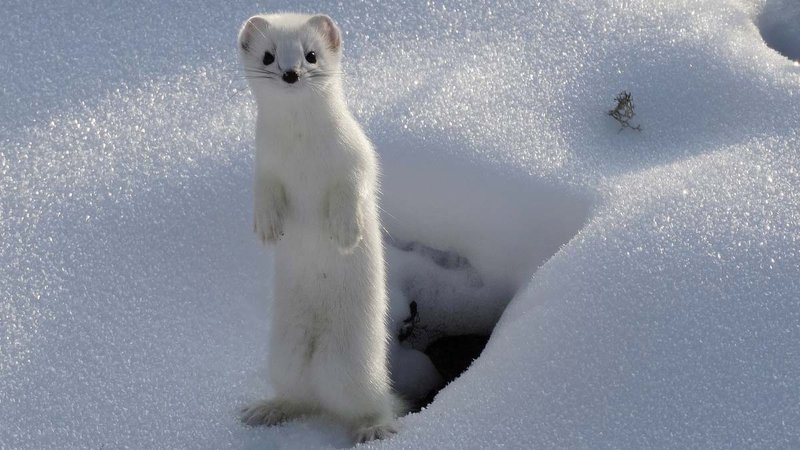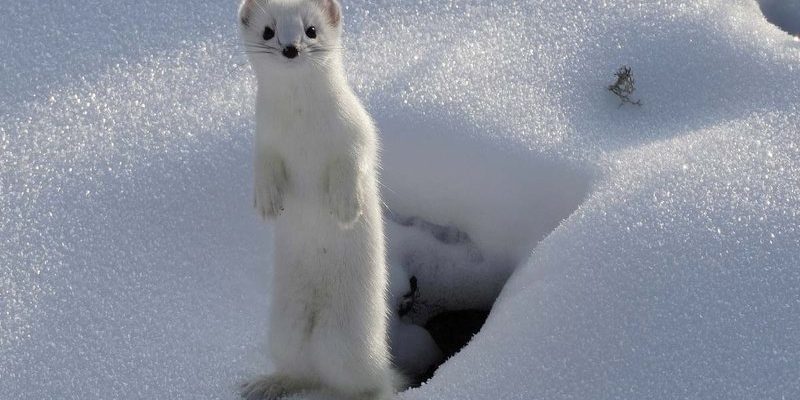
At first glance, you might see the ermine as just another cute animal flitting about, but it plays an essential role in its ecosystem. These agile hunters feast on small rodents and pests, helping to maintain balance in their habitats. However, with changing climates and human impact, the future of the ermine hangs in the balance. So, pour yourself a cup of coffee, and let’s break down what’s happening with these intriguing creatures and why it matters.
What is the Ermine?
The ermine, also known as the stoat, is a small mammal that can be found in various parts of the world, primarily in Europe, Asia, and North America. It’s fascinating to note that the ermine is not just cute but also incredibly adaptable. In the warmer months, it sports a brown coat with a white belly, but when winter rolls in, it transforms into a stunning white fur coat, providing excellent camouflage against the snow.
Ermines typically grow to about 10 to 12 inches long, not including their bushy tails. They have sharp claws and a slender body that allows them to slip through tight spaces in search of prey. You might be wondering why they change colors; it’s all about survival. In winter, a white coat helps them blend in with their snowy environment, making it hard for predators to spot them.
Current Population Status
So, where do we stand with the ermine population globally? Fortunately, the ermine isn’t classified as endangered—at least not universally. The IUCN (International Union for Conservation of Nature) lists the ermine as “Least Concern” overall. However, this blanket classification can be misleading. Some local populations face threats that could put them at risk.
In certain areas, habitat loss due to urban development and agricultural expansion can shrink their living space. In addition, climate change shifts their habitats, making it harder for them to find food and reproduce. In regions where they are declining, conservationists are taking action to protect their habitats and raise awareness about their needs.
Understanding Threats to the Ermine
While the ermine isn’t globally endangered, specific threats could harm their populations. Let’s explore a few significant ones:
- Habitat Destruction: Expanding cities, roads, and agriculture encroach on the ermine’s natural habitats, causing fragmentation.
- Climate Change: As temperatures rise, the ermine’s winter camouflage becomes less effective, making them more vulnerable to predators.
- Pesticides: The use of chemicals in agriculture can poison small rodents, which are crucial to the ermine’s diet.
Here’s the thing: these factors aren’t just threats. They’re interwoven with human activity and environmental changes. When we lose the ermine, we also lose a vital part of our ecosystems. Their decline can signal broader environmental issues that may also affect other wildlife.
Conservation Efforts Around the World
Conservationists and organizations are stepping up to ensure the ermine has a fighting chance. Various initiatives focus on habitat preservation, research, and awareness campaigns. For instance, some nonprofits are working diligently to restore wetlands and forests, which are critical habitats for the ermine.
In addition, wildlife corridors are being established to connect fragmented habitats, allowing ermines to roam and mate freely without running into human-made obstacles. These efforts are crucial because maintaining genetic diversity is vital for the survival of any species.
Let me explain: think of it like maintaining a garden. If you only grow one type of plant, it can’t withstand diseases or pests. The same goes for animal populations. Diversity helps strengthen resilience against environmental pressures.
How You Can Help
You might be wondering what you can do to support the ermine and other wildlife. Here are some actionable steps:
- Support Conservation Organizations: Consider donating to groups focused on habitat restoration and wildlife protection.
- Reduce Chemical Use: If you garden or manage land, use natural pest control methods to protect small mammals.
- Raise Awareness: Share information about the ermine on social media or within your community.
Even small actions can lead to significant changes. By advocating for the ermine, you’re contributing to the health of our ecosystems. It’s a ripple effect—one small change can lead to more extensive conservation efforts.
The Role of Education in Conservation
Education plays a critical role in conservation efforts. By informing others about the ermine, we can inspire more people to engage in wildlife preservation. School programs, community workshops, and public seminars can help spread the message about why species like the ermine matter.
You might have heard the saying, “knowledge is power.” It’s true in conservation as well. The more we understand about these creatures, their habitats, and the challenges they face, the more likely we are to advocate for their protection and the environment at large.
The Future of the Ermine
Looking ahead, the future of the ermine hinges on our collective actions. While they aren’t currently endangered on a global scale, local populations remain vulnerable. Addressing habitat loss, climate change, and other threats is urgent.
By supporting conservation efforts and spreading awareness, we contribute to ensuring these adorable creatures continue to thrive in their natural habitats. Remember, protecting the ermine isn’t just about saving one species; it’s about preserving the delicate balance of our ecosystems.
In conclusion, the plight of the ermine serves as a reminder of the interconnection between species and their environments. While they’re not endangered in the traditional sense, their future is intertwined with our choices. Every action counts, and together, we can make a difference. So next time you spot a little ermine darting through the snow, remember: it represents much more than just a cute animal—it symbolizes the health of our planet.

